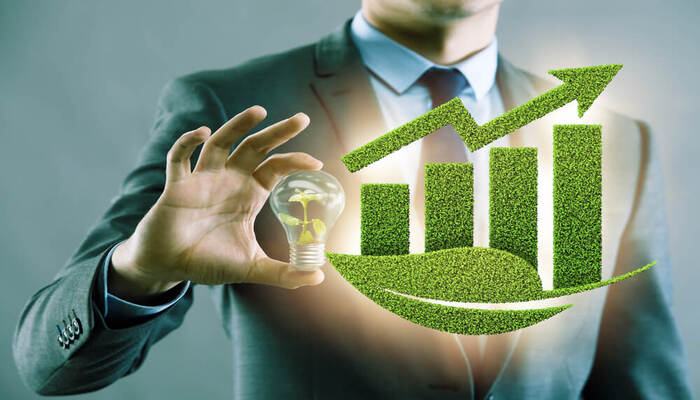Sustainable lending is rapidly becoming a cornerstone of responsible finance, offering a way to fund projects that benefit both the planet and society. In a world increasingly focused on environmental impact, it’s crucial to understand how this form of lending can shape a greener future.
As businesses and governments worldwide seek solutions for climate change and social inequality, sustainable lending provides an avenue for financial institutions to support green and responsible initiatives. Whether it’s funding renewable energy or affordable housing, the possibilities are vast.
Are you curious about how sustainable lending can make a real difference, especially in South Africa? Keep reading to explore the potential and challenges that come with financing a more sustainable tomorrow.
Understanding Sustainable Lending
Sustainable lending refers to the process of providing financial resources to projects and businesses that align with sustainability principles. These principles focus on addressing environmental, social, and governance (ESG) factors.
Unlike traditional lending, which prioritizes profit maximization, sustainable lending places equal importance on long-term environmental and social impacts.
For example, a sustainable lending institution may choose to finance renewable energy projects, such as solar or wind energy farms, or initiatives that promote social equity, like affordable housing for low-income communities.
The goal is to fund projects that not only provide financial returns but also contribute positively to the environment and society.
The Importance of Sustainable Lending in South Africa
South Africa faces various environmental and social challenges. From the devastating effects of climate change, such as severe droughts and floods, to high levels of inequality and poverty, the country requires innovative solutions that tackle these issues in a sustainable manner.
Sustainable lending provides an opportunity for financial institutions, businesses, and governments to work together to address these challenges.
One of the key sectors that can benefit from sustainable lending is renewable energy. South Africa has abundant natural resources, including sunlight and wind, which can be harnessed to generate clean energy.
However, the country still relies heavily on coal-fired power plants, contributing to high levels of carbon emissions. By prioritizing sustainable lending for renewable energy projects, South Africa can transition to cleaner energy sources, reduce its carbon footprint, and create new green jobs.
Moreover, sustainable lending can also support the country’s efforts to achieve the United Nations Sustainable Development Goals (SDGs). These goals focus on poverty eradication, equality, and environmental protection. Financing projects that align with the SDGs can improve the quality of life for South Africans, while also contributing to global sustainability efforts.
Benefits
-
Environmental Protection
One of the most significant advantages of sustainable lending is its potential to protect the environment. By financing projects that promote green technologies, such as renewable energy, energy-efficient buildings, and waste management, financial institutions can help reduce pollution and mitigate climate change. In South Africa, where environmental challenges are particularly pronounced, sustainable lending can be a powerful tool in promoting cleaner and more efficient industries. -
Social Impact
In addition to environmental benefits, sustainable lending also promotes positive social outcomes. For example, financing affordable housing projects or initiatives that improve access to education and healthcare can help address the country’s deep social inequalities. By investing in projects that uplift communities, sustainable lending contributes to creating a more equitable society. -
Economic Growth
While sustainable lending focuses on long-term environmental and social returns, it can also provide strong financial performance. Green and responsible projects often offer stable returns and can be less susceptible to market volatility compared to traditional investments. By financing such projects, financial institutions can diversify their portfolios and foster economic growth in sustainable sectors. -
Attracting Global Investment
As global interest in sustainability grows, sustainable lending becomes an attractive opportunity for international investors. Many global institutions and governments are now prioritizing investments that contribute to environmental and social well-being. South Africa, with its growing renewable energy sector and commitment to sustainability, is well-positioned to attract international investments in green and responsible projects. By promoting sustainable lending, the country can tap into this global market and secure additional funding for its development projects.
Challenges
Despite its benefits, sustainable lending faces several challenges in South Africa. One of the main barriers is the lack of awareness and understanding of sustainable finance among local financial institutions.
Many banks and investors are still hesitant to embrace sustainable lending due to concerns about financial returns or the perceived risks associated with green investments.
Another challenge is the need for clear regulations and guidelines that support sustainable lending. In South Africa, there is a growing recognition of the need for green finance, but the regulatory framework for sustainable lending is still evolving.
Clear policies and incentives are needed to encourage more financial institutions to adopt sustainable lending practices and provide the necessary funding for green and responsible projects.
Furthermore, access to finance for smaller projects remains a significant challenge. Many small businesses and startups with innovative sustainable ideas struggle to secure the necessary financing to scale their operations.
Developing inclusive financing models that support a wide range of projects, from large-scale renewable energy initiatives to small community-based ventures, is critical for promoting widespread adoption of sustainable lending in South Africa.
The Future of Sustainable Lending in South Africa
The future of sustainable lending in South Africa looks promising, especially with the growing global focus on environmental, social, and governance (ESG) issues. Financial institutions are beginning to recognize the importance of sustainability and are increasingly incorporating ESG factors into their lending practices.
The South African government has also made strides in promoting sustainability, with initiatives such as the Renewable Energy Independent Power Producer Procurement Programme (REIPPPP), which has attracted significant investments in renewable energy projects.
As awareness grows and regulatory frameworks evolve, sustainable lending will likely become a mainstream practice in South Africa’s financial sector. The demand for green bonds, ESG-related investments, and climate-friendly financing solutions will increase, opening up new opportunities for businesses and investors.
Conclusion
Sustainable lending is more than just a financial trend; it is a transformative force that can drive positive environmental and social change in South Africa. By financing green and responsible projects, financial institutions can play a crucial role in addressing the country’s most pressing challenges, such as climate change, poverty, and inequality.
While challenges remain, the future of sustainable lending in South Africa is bright, with increasing opportunities for growth, investment, and long-term impact. Through collaboration, innovation, and commitment to sustainability, South Africa can pave the way for a greener, more responsible financial future.





